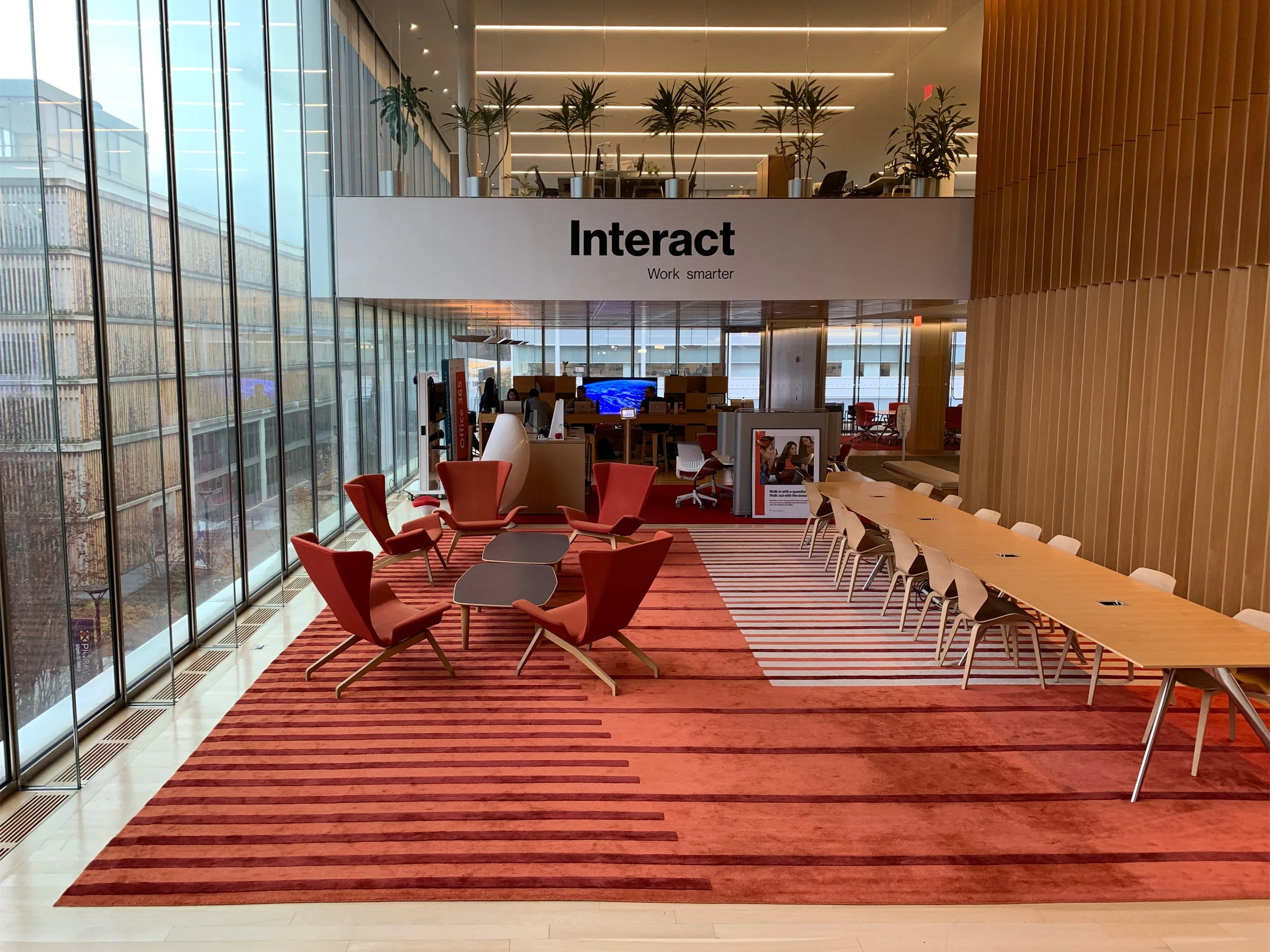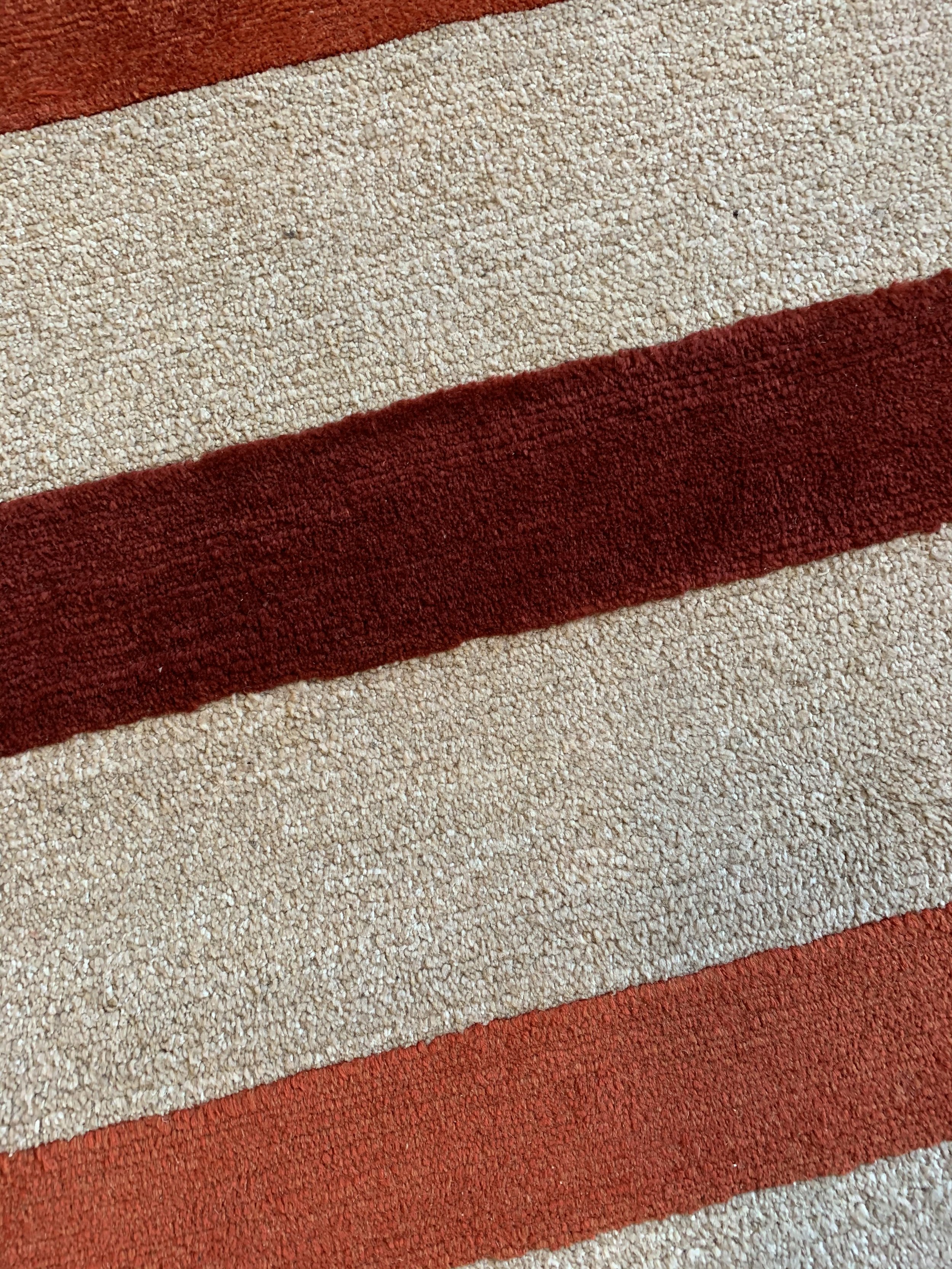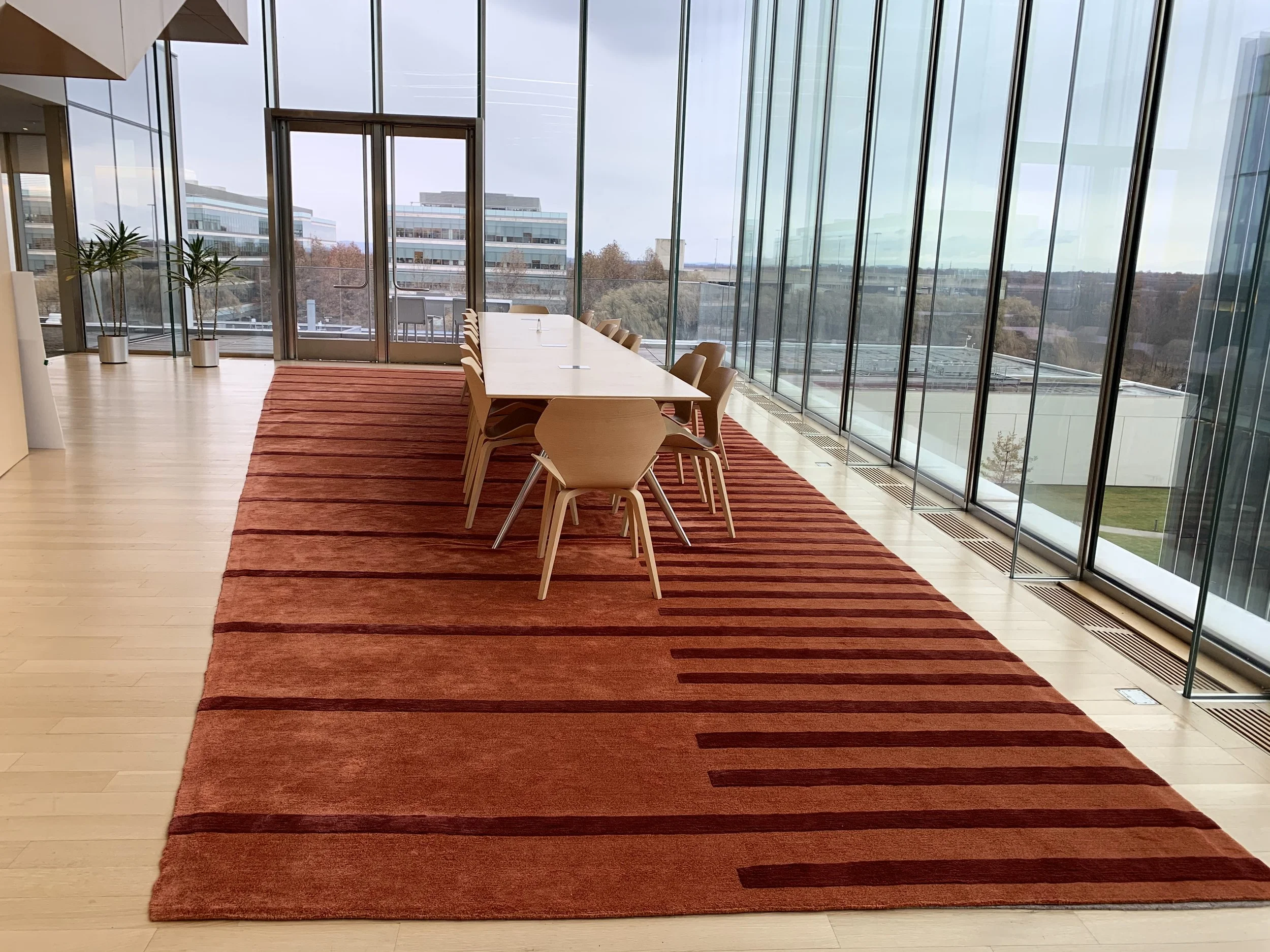by Eileen Le Guillou
Our rugs are handknotted with the same technique and materials that have been used for hundreds of years to create the stunning antique rugs that re coveted today. The complex, historic and labor intensive craft of hand weaving has thankfully persisted, though in remote areas of the world.
Relative to their machine-made alternatives, handknotted rugs are more luxurious and appear pricier. We have come to associate refined luxury with delicacy but in this case, it is quite the opposite. While upfront costs for handmade rugs may be higher, they are constructed to be resilient.
In late 2019, we paid a visit to a project we had completed nearly seven years prior. Large scale handknotted rugs were placed throughout the grand halls and meeting rooms of a large office campus building. With employees running back and forth; coffee and lunch spills; sand, snow and salt tracked in year after year, we were delighted to see our rugs vibrant and plush.
Designed in collaboration with our brilliant architect partners, they perfectly complement the building structures and features. We incorporated silk fibers into the wool to add a sheen that can be seen from the expansive corners of the office building, adding an extra pop on the gloomy, rainy day we visited.
The carpet industry has innovated with new machinery, plastic fibers, and sticky backing that secures threads quickly, yet these inventions serve as the home furnishing equivalent of ‘fast-fashion’. They can be affordable and readily available, but they are not bought with the intention to be loved and cared for through decades, and passed down through generations. While broadloom may have had to be replaced nearly three times over, the handmade originals are holding strong.






